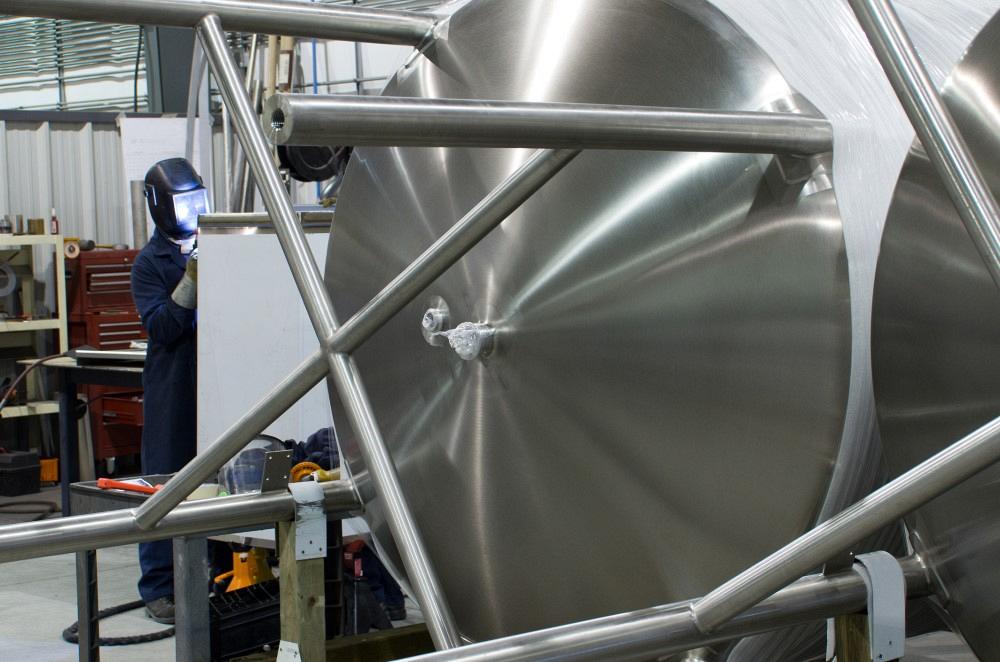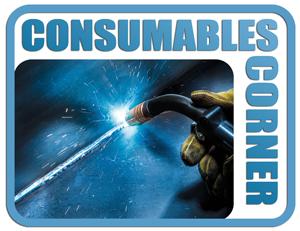Independent welding consumables professional
- FMA
- The Fabricator
- FABTECH
- Canadian Metalworking
Categories
- Additive Manufacturing
- Aluminum Welding
- Arc Welding
- Assembly and Joining
- Automation and Robotics
- Bending and Forming
- Consumables
- Cutting and Weld Prep
- Electric Vehicles
- En Español
- Finishing
- Hydroforming
- Laser Cutting
- Laser Welding
- Machining
- Manufacturing Software
- Materials Handling
- Metals/Materials
- Oxyfuel Cutting
- Plasma Cutting
- Power Tools
- Punching and Other Holemaking
- Roll Forming
- Safety
- Sawing
- Shearing
- Shop Management
- Testing and Measuring
- Tube and Pipe Fabrication
- Tube and Pipe Production
- Waterjet Cutting
Industry Directory
Webcasts
Podcasts
FAB 40
Advertise
Subscribe
Account Login
Search
Consumables Corner: Strategies for vertical-up welding of stainless steel
Working through performance issues when using GMAW, GTAW, and FCAW welds
- By Nino Mascalco and Rob Koltz
- July 8, 2020
- Article
- Consumables

Consumables Corner contributors Rob Koltz and Nino Mascalco help a reader work through performance issues when using gas metal arc welding (GMAW), gas tungsten arc welding (GTAW), and flux-core arc welding (FCAW) for vertical-up applications on stainless steels. Getty Images
Q: I would be interested in any information about vertical welding of stainless steels. Hexavalent chromium restrictions prevent most places from using flux-core arc welding (FCAW), and gas metal arc welding (GMAW) doesn’t perform very well in either direction for groove welds. What are other fabricators doing to get better performance and reliability?
A: Stainless steel (SS) in general poses several manufacturing difficulties, from material handling to cutting and welding. Let's do a quick review of what makes steel stainless.
Several different groups of SS exist, but in general carbon steel becomes a stainless steel with a minimum addition of 10.5% chromium by weight. The most common version of stainless steel is austenitic SS, which includes about 8% nickel by weight. This improves corrosion resistance, acts as an austenite catalyst, and greatly improves toughness for cryogenic applications.
The family of austenitic SS, which are categorized as 18% chromium/8% nickel materials, offer an effective resistance to oxidation (rusting) and corrosion of an environmental or chemical nature. Selecting a particular type of SS depends on its ability to deliver the required mechanical properties for in-service conditions. These vary depending on product concentration, operating temperature range, or viscosity. Abrasive attacks can greatly reduce the effectiveness of certain grades or types of SS as a function of operating temperature.
With regards to welding, the addition of chromium and nickel, along with other alloying elements, is also what makes welding SS more challenging. These elements change the dynamics of the weld puddle, one being fluidity, which is caused by the variations in arc energy transfer and surface tension of the molten weld pool. For these reasons, vertical-up (3G/F) or vertical-down welding becomes more challenging.
The first goal when it comes to SS weld manufacturing is to find a proper filler metal to meet the intended service conditions.
If needed, a shielding gas should be taken into consideration regarding the in-service conditions required. Assuming all of those conditions have been satisfied, the next goal is to use a welding process and filler metal that give you the ability to deliver a weld free of defects and optimize the welding process’s deposition rate.
For most applications the choices will be gas tungsten arc welding (GTAW), GMAW, or FCAW for manual welding processes. GTAW produces some of the highest-quality welds but is very slow in terms of deposition rates and travel speed, so we won't consider it at this time. Of course, field service welding would also have shielded metal arc welding (SMAW) as a potential go-to for equipment simplicity purposes, but we'll focus on in-house manufacturing.
Since SS has a variety of chemistry compositions, much more so than carbon steels, what works for one grade or type may not work as well for another grade. The specific grade of SS base material needed for the service conditions requires that you select a filler metal that matches or exceeds the required mechanical properties.
The common issues with welding vertical-down is the resulting welds have poor weld bead appearance, excessive spatter, poor weld toe tie-ins, lack of fusion, and a washed-out (or concave) appearance. You can still create a structurally sound, leakproof weld on thin materials, but overall these variables combined can cause manufacturers to seek other solutions. Keep in mind, for materials thinner than 3/16 in., vertical-down welding is the most common technique.
If the part you’re welding cannot be positioned safely so the welds are in the flat or horizontal position (1G/F or 2G/F), then 3G/F (vertical-up) may be the only option.
For thick sections, the best performance comes from welding vertical-up with GMAW or FCAW. Welding with FCAW does generate more smoke and fume than GMAW, but it does produce high-quality welds and decent deposition rates. Many companies use FCAW for welding SS with the proper engineering controls in place to make it safe for the welder. However, please consult with your safety department and local industrial hygienists to ensure proper safe practices are employed and OSHA requirements are adhered to.
With all things considered, this leaves us with GMAW as the ideal process for welding SS. GMAW has two options for wire selection—solid wire or metal-cored wire. For solid-wire applications, the most common practice in industry is using a 0.035- to 0.045-in.-dia. solid wire, a 98% argon/2% carbon dioxide shielding gas blend, and the short-circuiting transfer mode. You'll want a constant-voltage welding power source that has a steep slope and adjustable inductance, which minimizes weld spatter and allows for greater puddle fluidity when welding in the 3G/F position. This is critical for producing quality welds and great appearance with this weld metal transfer mode.
If you have equipment that can weld in pulse-transfer mode, then you can use metal-cored wires. Typically, this wire uses a 90% argon/10% carbon dioxide shielding gas blend. You'll want to use a 0.045- or 0.052-in.-dia. electrode and weld in the pulsing mode.
In some applications, the pulse-transfer mode offers good results by welding vertical-down and for others vertical-up based on material thicknesses discussed previously. Depending on the manufacturer of the welding equipment and its pulse welding waveforms, the quality and chemistry of the filler metal and the grade of SS you are working with, you'll have to do some experimentation to find weld parameters that produce the best result.
About the Authors


Rob Koltz
Application Engineer
411 S. Ebenezer Rd.
Florence, 29501
636-485-2253
About the Publication
Related Companies
subscribe now

The Welder, formerly known as Practical Welding Today, is a showcase of the real people who make the products we use and work with every day. This magazine has served the welding community in North America well for more than 20 years.
start your free subscription- Stay connected from anywhere

Easily access valuable industry resources now with full access to the digital edition of The Fabricator.

Easily access valuable industry resources now with full access to the digital edition of The Welder.

Easily access valuable industry resources now with full access to the digital edition of The Tube and Pipe Journal.
- Podcasting
- Podcast:
- The Fabricator Podcast
- Published:
- 04/16/2024
- Running Time:
- 63:29
In this episode of The Fabricator Podcast, Caleb Chamberlain, co-founder and CEO of OSH Cut, discusses his company’s...
- Industry Events
16th Annual Safety Conference
- April 30 - May 1, 2024
- Elgin,
Pipe and Tube Conference
- May 21 - 22, 2024
- Omaha, NE
World-Class Roll Forming Workshop
- June 5 - 6, 2024
- Louisville, KY
Advanced Laser Application Workshop
- June 25 - 27, 2024
- Novi, MI
































